Insight: The Nikonos RS 13mm conversion
Seacam’s additional optimization
Since May 2013, I have been using the adapted lens with my D800 and I’ve thoroughly tested it under different conditions. I have used it in the Red Sea, the Bahamas, Indonesia and Croatia. In Croatia I carried out a great number of trimix dives and the deepest picture was taken at the depth of exactly 100 meters! On all my dives I have used a regular Seacam D800 housing with the S10 viewfinder and the Seacam 150 Offshore TTL flash (tested up to 160 m).
Despite the fact that I pointed out at the beginning that all lens functions work perfectly, it was not quite so. I noticed one interesting phenomenon: if a light meter was obeyed, the resulted image was one to two f-stops overexposed like the aperture would not be stopped down sufficiently. There were also two additional phenomena noticed: images taken even at f/22 were not soft (as they should be due to the diffraction problem) and depth of field was unusually shallow.
I presented the issue to Seacam’s electronics expert. He discovered that there is a mechanical incompatibility between the original Nikonos RS lens and Nikon land cameras for stopping down the aperture. A Nikonos lens requires a longer shift of aperture lever compared to the Nikon’s land lenses in order to stop down the aperture sufficiently. An f/2.8 aperture is in fact an f/2.8 aperture, but when the camera is trying to stop down the lens to f/22, the lens is in reality stopped down only to f/14, which is entirely consistent with my observations. In fact, stopping down the RS lens to f/22 would require us to set f/45 value on the Nikon land camera, which is impossible since the lens provides the camera information that its aperture range is from f/2.8 to f/22. A Seacam electronics expert was able to brilliantly reprogram the electronic circuit in the RS lens so that the lens “thinks” its aperture range is from f/2.8 to f/45, thus giving the camera this false information. If we want to stop down to the effective f/22, the value on the camera must be set to f/45. The benefit of stopping down the lens to the smallest aperture (f/22) is of particular importance in extreme close-up shots, to achieve the maximum depth of field.
The table of settings on the camera and the effective aperture values:
| Camera Settings | Effective Aperture |
|---|---|
| 2.8 | 2.8 |
| 3.2 | 3.2 |
| 3.5 - 4 | 3.5 |
| 4.5 | 4 |
| 5 | 4.5 |
| 5.6 - 6.3 | 5 |
| 7.1 | 5.6 |
| 8 | 6.3 |
| 9 - 10 | 7.1 |
| 11 | 8 |
| 13 | 9 |
| 14 - 16 | 10 |
| 18 | 11 |
| 20 | 13 |
| 22 - 25 | 14 |
| 29 | 16 |
| 32 | 18 |
| 36 | 20 |
| 45 | 22 |
As soon as this optimisation was developed by a Seacam’s electronics expert, the old original, but reprogrammed circuit was installed back in my lens.
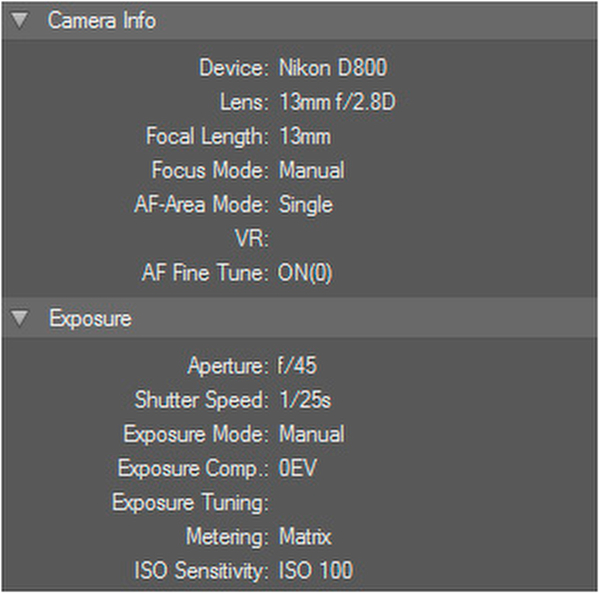
The image shows an example of an EXIF file when the lens was set to f/45 aperture (effective f/22).
Optical results (testing in the swimming pool).
The question being addressed the most was, is it all worthwhile? How will a twenty years old optical design, without all the modern optical advantages (like aspherical lenses, ED glass, Nano-coating etc.) behave on a modern high-resolution digital sensor such as in D800?
I first tested the lens with my D800 in the swimming pool by shooting my underwater test card and then in the Red Sea in real life conditions. Unfortunately, this was at the time when I was not yet aware of the before mentioned aperture issue. So I basically tested the lens only to f/14 instead of f/22. For this reason, I will not present the quantitative results of my tests.
In general, I noted with great pleasure that the results of optical quality of Nikonos RS R-UW AF 13mm f2.8 lens are very good. The optical quality of this lens is great for the most image parts and degrades only in the extreme corners. A large area of the image (at least 75% of the area) is sharp even when the lens is wide open. The f/2.8 to f/5.6 apertures can be used without fear when there are no important details in the image corners. The f/8 aperture (effective f/6.3) represents the limit where a lens provides sufficient sharpness throughout the image area. An ideal range of sharpness, where the whole image is razor sharp from corner to corner is f/11 (effective f/8) to f/22 (effective f/14) and most probably also beyond, until the diffraction problems start to emerge.
The underwater RS lens is also incredibly well corrected for chromatic aberration.
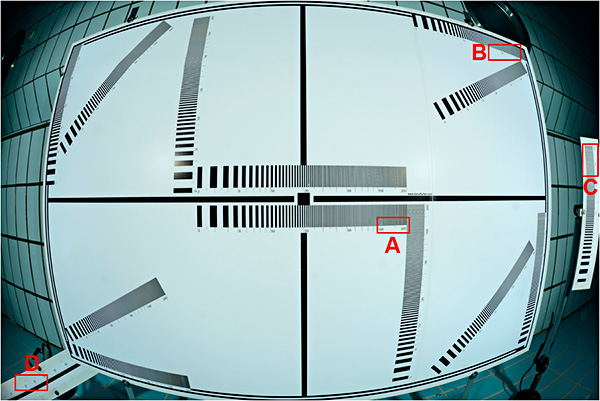




The lens provides close-up focusing, as shown below, but unfortunately still not as close as the DX 10.5mm fisheye lens (using a mini dome port). It should also be noted that the depth of field is significantly lower due to the FX-format (full frame) sensor. In case of close-up focusing, the image background is quite unsharp, even if taken at f/22 (effective f/14).
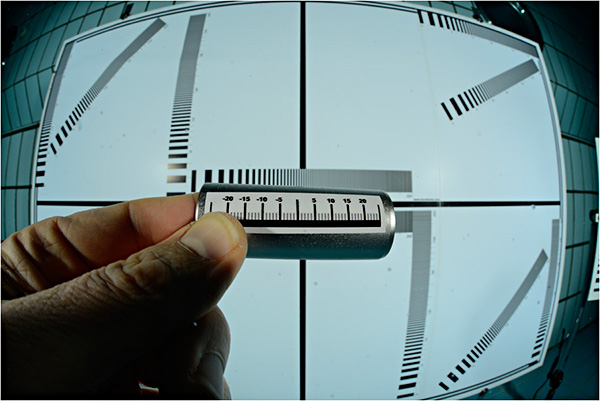
Finally, it should be mentioned that this lens does not have a profile in Lightroom. According to the optical characteristics, it is most similar to the land Nikon 16mm f2.8 Fisheye lens, but it is still another lens with different optical characteristics. A 16 mm land lens has a viewing angle of 180° and a 13 mm (effective 17 mm!) underwater lens has 170°. If in Lightroom, a 16 mm profile is used to settle curved lines a.k.a. “defishing”, the lines would bend slightly outwards (pincushion distortion), as shown in the image below.
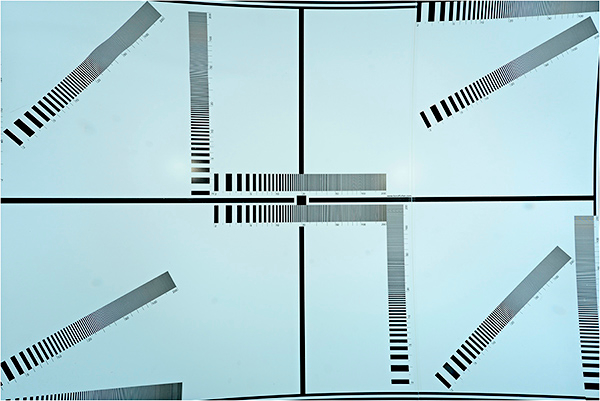
In a few words: According to my experience in the swimming pool, the underwater Nikonos RS R-UW AF 13mm f2.8 lens provides the following advantages:
* Excellent sharpness in full FX format, which is incomparable to any land lens in combination with a big dome port.
* A small front element (“dome port”) enables a close-up focusing, but again with better optical quality compared to the one of a land fisheye lens behind big port dome (such as Seacam Superdome).
* Practical absence of chromatic aberration.
There are also some drawbacks, but in general minor in comparison to the advantages:
* Reduced sharpness in the image corners at wide open apertures (f/2.8 to f/5.6).
* A close focusing characteristic of the lens is good but not as excellent as the land DX Fisheye 10.5mm f/2.8 lens.
* Reduced depth of field due to FX format, which can sometimes be disturbing in extreme close-up photography.
* Overexposed images at automatic exposure mode (without taking into account aperture corrections).
* The lens does not have a profile in Lightroom.
* No possibility of over-under shots (on the surface this underwater lens focuses very closely only and is sharp only in the image centre).
Testing in the sea (prior to Seacam aperture correction).
After the “laboratory” testing was carried out in the swimming pool, I started testing the R-UW AF 13mm f2.8 lens with Nikon D800 in Seacam housing in real life conditions. I was shooting in the Red Sea, the Bahamas, Indonesia, and in the Adriatic Sea. In the Red Sea, where conditions for underwater photography are very good, I endeavoured for maximum quality. In the Adriatic Sea, I tested it mainly in extreme depths.
When I reviewed my Red Sea photos on a large (30”) computer monitor, I was initially a little disappointed since the sharpness in the extreme image corners was not as good as in my swimming pool shots. Fortunately, I quickly discovered the reason for this – see explanation below.
Fisheye lenses, like the rest of the lenses, focus on flat surface and not on spherical surface. In the swimming pool, where I photographed more or less flat objects (test card), the lens perfectly accomplished its mission. In real life, however, when we shoot underwater with fisheye lenses, the objects are all around us and in particular those in extreme image corners are mostly before the focus plane (i.e. too close). Since this lens provides relatively small depth of field, objects lying outside the focus plane are unsharp. The reason for image corners not being so sharp is not in poor optical design of the lens, but in the non-ideally positioned objects.
The image below graphically explains the problem of blurred corners.
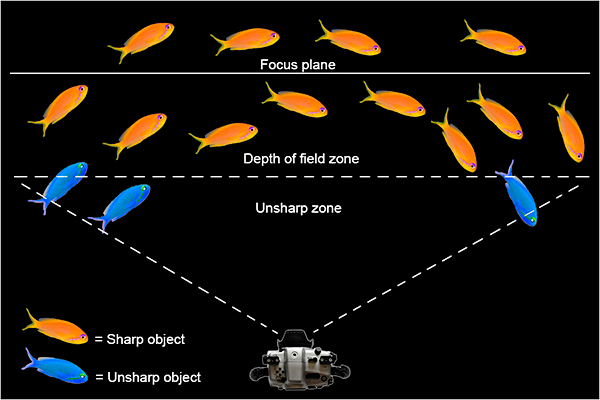
The image below (ISO 400, f/22 (effective f/14), 1/80) shows that fishes (in the background) in the upper image corners are much sharper than the rocks and corals in the lower image corners which are too close. It can also be noticed that the top of the left soft coral is quite blurred (because it is too close) but fishes in the background behind it are sharp.
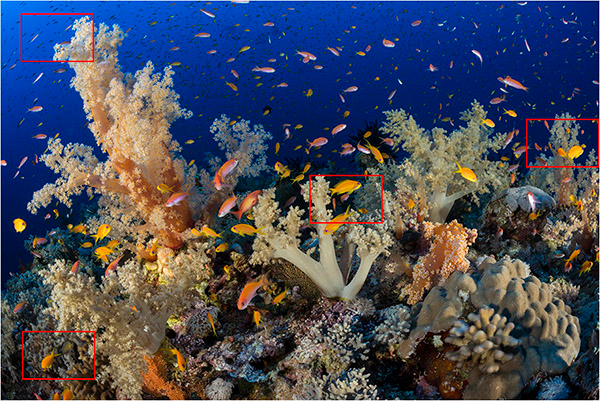
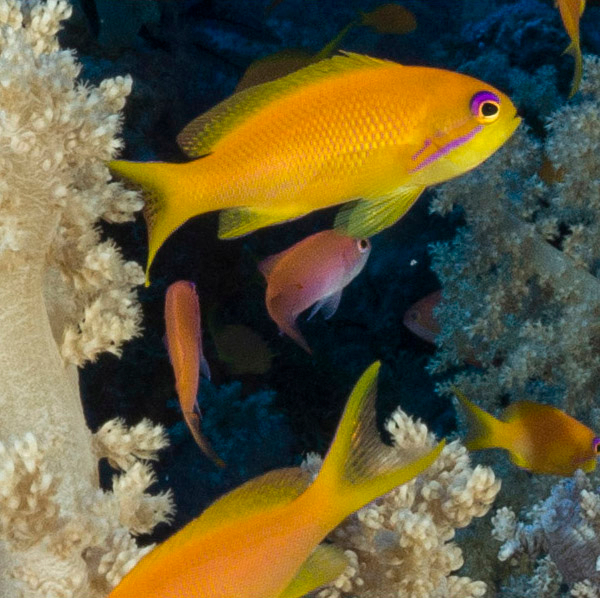
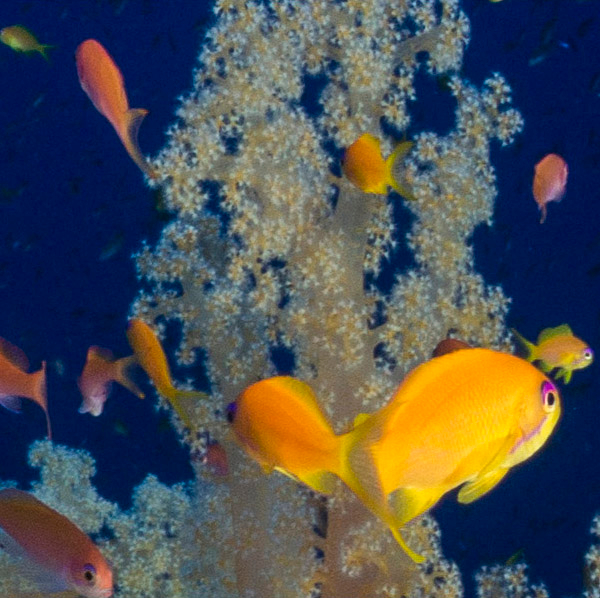
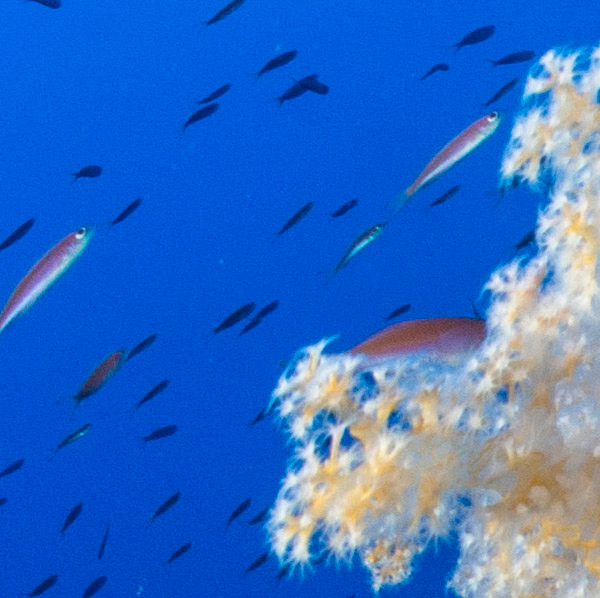
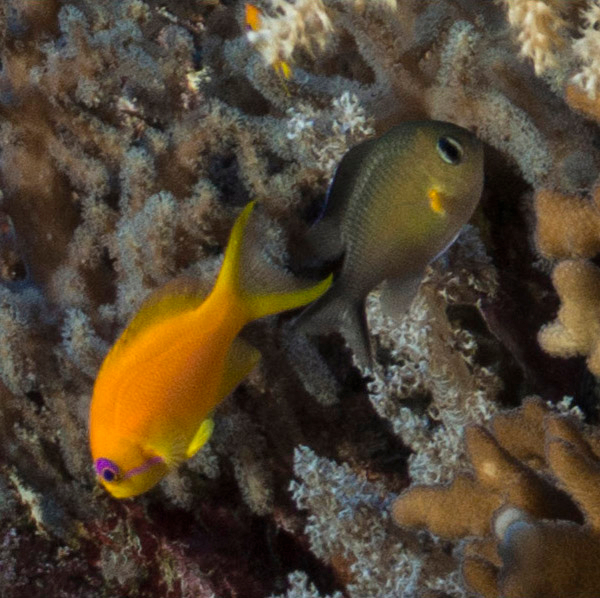
The picture below was taken in the Adriatic Sea at a depth of 95 m (ISO 800, f/18 (effective f/11, 1/13 s).
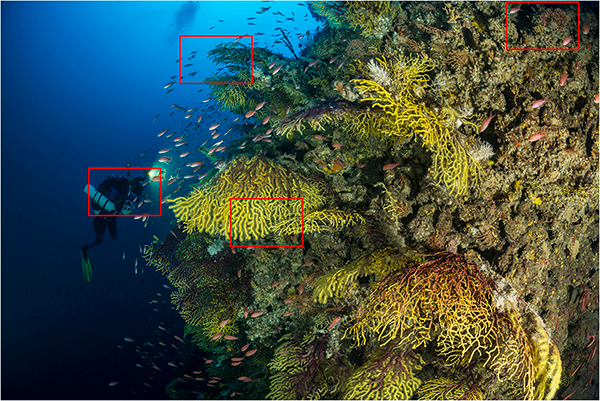
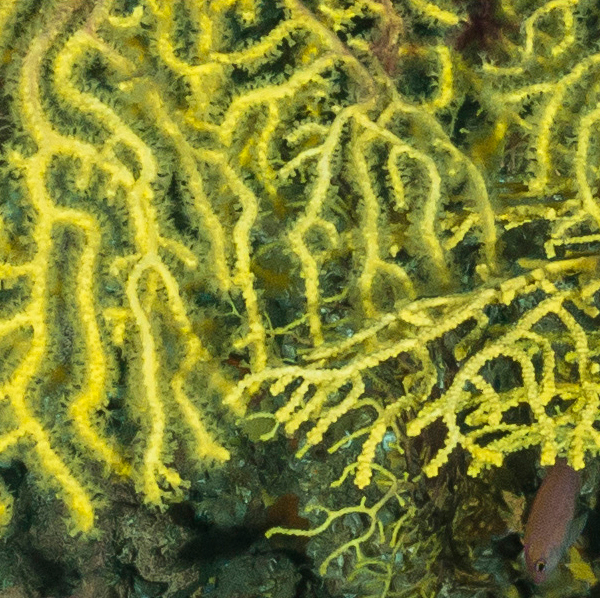
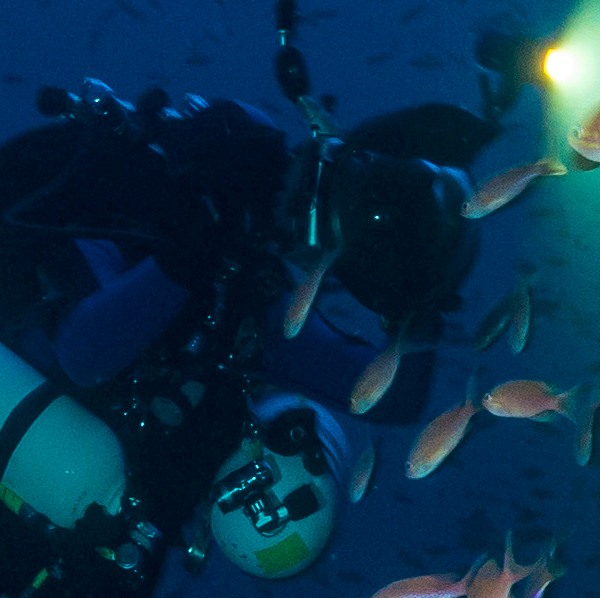
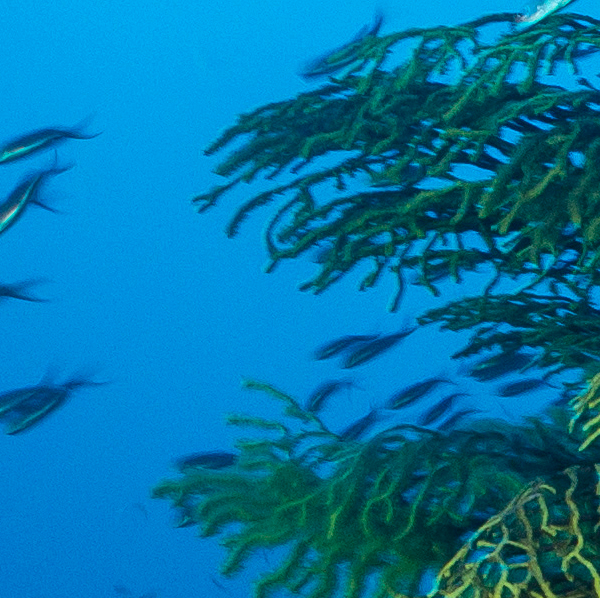
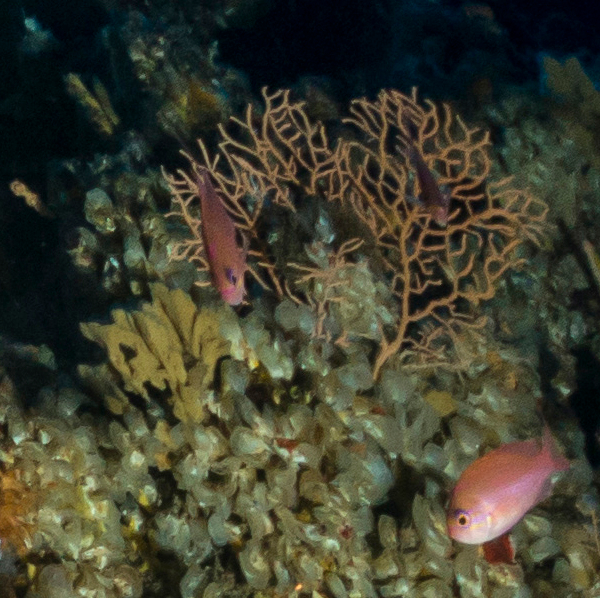
The picture below shows how very small the depth of field in close-up shooting is (ISO 200, f/16 (effective f/10), 1/100), where even the entire main object is not completely sharp.
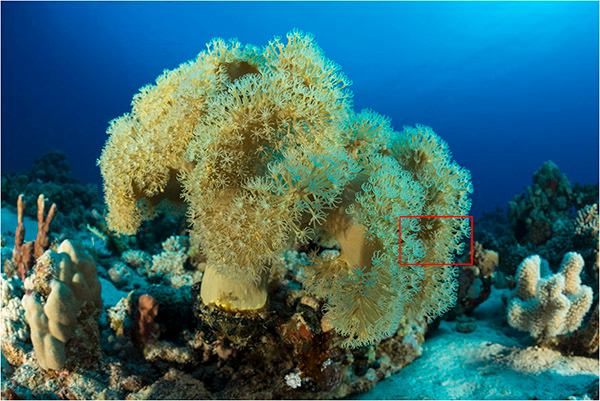
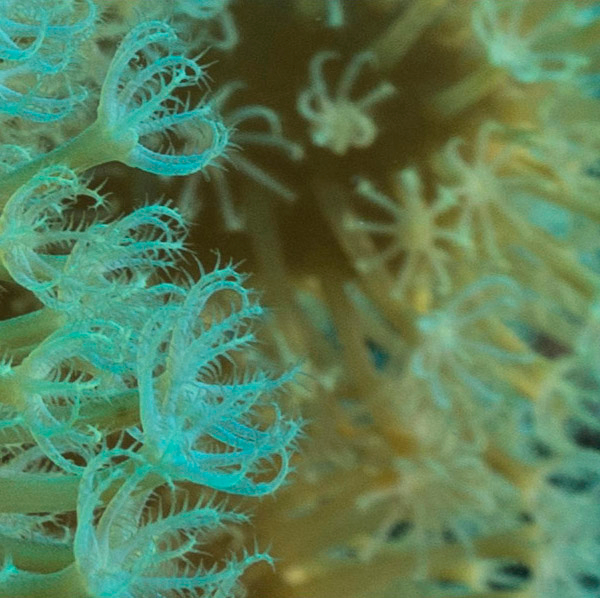
However, it should be remembered that due to its small pixels, the D800 apparently provides more shallow depth of field than cameras with lower resolution. Consequently, a picture taken with the D4, for example, would appear sharper.
Finally, I should mention another pleasant surprise related to this lens: it works extremely well when shooting against the light source. With this lens, I have, so far, taken thousands of images and rarely noticed any flare. In combination with the D800, which has an extraordinary dynamic range, realistic underwater images of the sun burst can be finally taken as in “the good old film days” (image below).
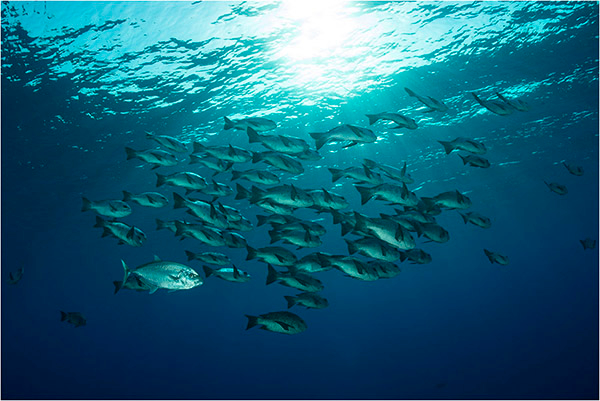
Conclusion
Of course we cannot expect the best optical quality from a twenty-year-old lens, however its sharpness on high-resolution cameras such as the D800, is satisfactory enough. I can imagine that in the film days it was a true optical pearl!
Personally, I would say that the proportion between the image sharpness in the middle and in the corners is comparable to a Nikon DX Fisheye 10.5mm f/2.8 lens in combination with a big dome port (such as Seacam Superdome), which is according to my tests the best combination of any land wide-angle lens and dome port. There are two major benefits of this 13mm underwater lens over the DX 10.5mm lens behind big dome: firstly, the image is taken on the full 35 mm format with all the benefits thereof instead of on a small cropped sensor, and secondly, instead of a big and clumsy dome port, a small “dome port” is used. In any case, the R-UW AF 13mm f2.8 lens, in all respects, provides better optical results than any full frame fisheye lens in combination with any dome port.